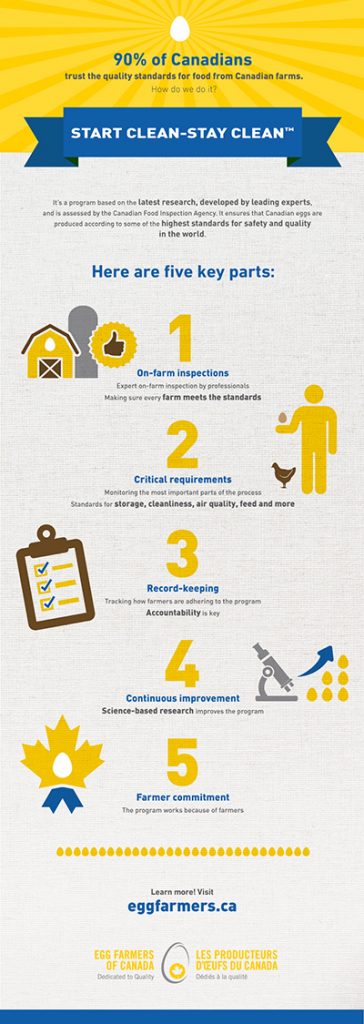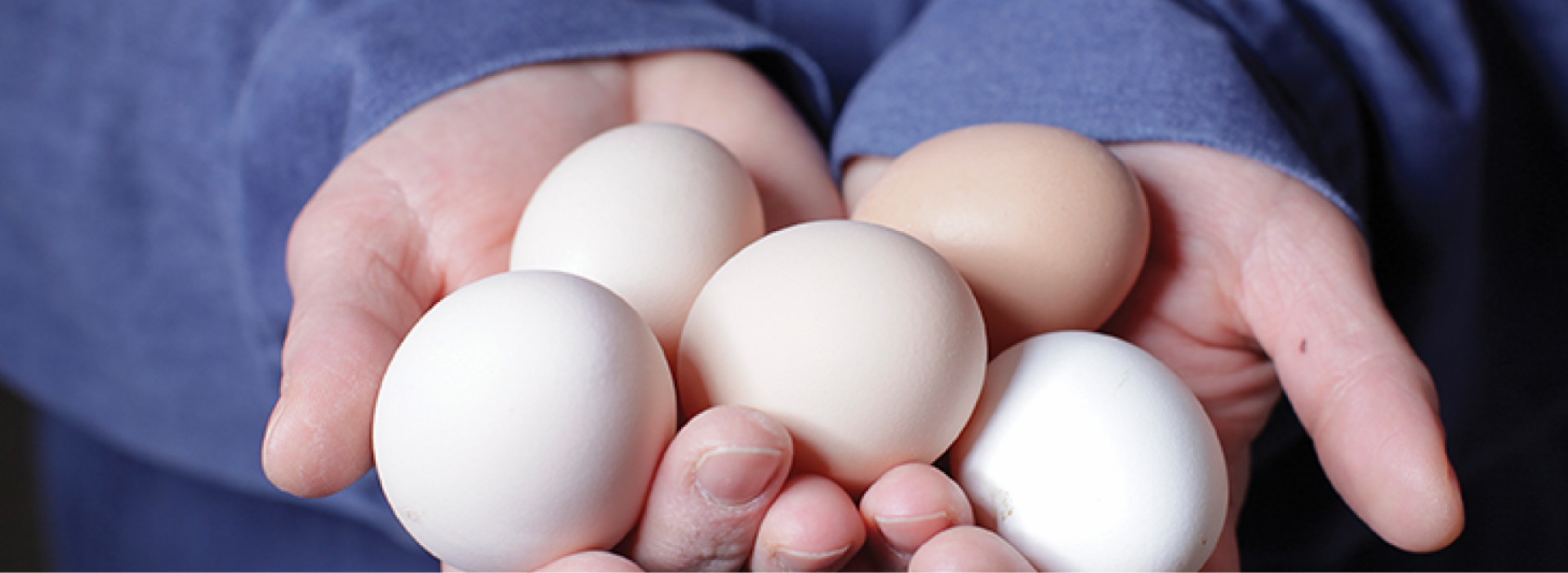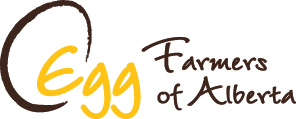Salmonella, how to avoid exposure when cooking eggs and the Start Clean Stay Clean Program
 What is Salmonella?
What is Salmonella?
Salmonella is a type of bacteria and is one of the most common causes of food poisoning worldwide.
There are over 2,000 different types of salmonella.
Salmonella bacteria are found naturally in the intestines of animals, especially poultry and swine. The bacteria can also be found in the environment.
People who eat food contaminated by Salmonella can become ill with salmonellosis. As few as 15-20 bacterial cells are enough to cause illness. Symptoms include high fevers, severe headaches, vomiting, nausea, abdominal pain, diarrhea, and abdominal cramps
Many bacteria, including Salmonella species, can reside in healthy food animals, without them showing any signs of illness. These animals can then spread the bacteria to other healthy animals, or to people.
Where does Salmonella come from?
The primary habitat of Salmonella is the intestinal tract of animals such as birds. Chicks of all ages can become infected with SE – although severely stressed birds or those with a weakened immune system are more prone to becoming infected. Salmonella is excreted in the feces/droppings of animals and is then spread through the movement of insects, pests, equipment, and people. Salmonella can also thrive in the environment, particularly in areas where dust and debris provide moisture and nutrients.
Most salmonella’s that can make people sick are not found inside eggs. Salmonella Enteritidis (SE) is an exception as there is evidence that these varieties of Salmonella can be passed from the laying hen to the inside of the egg. This is extremely rare and thorough cooking destroys Salmonella but Canadians enjoy eating their eggs a variety of ways – hard or softly cooked.
So – the question remains – is it safe to have runny or under-cooked eggs? My understanding has always been that you need to cook the white of the egg thoroughly but in everyday conditions it is okay to have a runny yellow. Pregnant women, the elderly, infants and immune compromised individuals should fully cook the egg yolk for additional safety.
The Egg Farmers of Alberta have created the Start Clean-Stay Clean Program particularly to control the spread of salmonella and other pathogens in poultry barns. It is mandatory for all registered egg producers in Alberta, including the heritage chicken barn at the U of A! Here is a description of the program.
When the Start Clean – Stay Clean program began in 1990, it was called “Safe from Salmonella”. This national program, which consisted of a simplistic 10 question evaluation, was developed in response to a serious salmonella outbreak in the UK that decimated their egg industry: egg sales fell by over 60% overnight and over 2 million layers were ordered destroyed. Over the last 28 years, this program has evolved to a comprehensive, HACCP based on farm food safety program.
Start Clean – Stay Clean™ (SC-SC) tracks all regulated egg farms in Canada, to eliminate or mitigate risks caused by both known and unknown pathogens. The SC-SC program ensures that egg farmers are monitoring critical control points, implementing best management practices, and keeping extensive records related to factors including barn temperature, air quality, cleanliness, egg collection, egg storage and testing for Salmonella Enteritidis (SE). On-farm compliance is monitored via regular inspections by a trained team of both provincial and national field inspectors.



